How Long Do Lightning Bugs Live
If you're lucky, you've had the experience of sitting outside on a warm, summertime nighttime and watching lightning bugs glimmer all around yous. Information technology's a pretty magical feeling, and it's all thanks to footling glowing bugs! Just what are lightning bugs, exactly? What makes them glow? And why do they only come out during the summer? This article volition teach you everything yous need to know about lightning bugs, and we'll answer the questions like: Then allow's become ahead and run across our glowy friends! Feature Epitome: (John Robinson) Lightning bugs are function of the Lampyridae family, which is in the social club of insects called Coleoptera. That ways that lightning bugs are actually a type of beetle! Yous might be thinking that lightning bugs don't await similar the types of beetles y'all've seen before. That's not surprising, since there are more than 350,000 known species of beetles. They're actually the largest group of animals on Earth. There are many different types of lightning bug species all over the earth. There are 2,000 known species of lightning bugs, merely the most common species in the U.s. is the Photinus pyralis . These little guys are almost 10-14 millimeters long, have antennae, a iii-segmented body, and are ruddy and black in color. Oh, and of form: they have the ability to glow through a process called bioluminescence (more on that a little later). They're besides a species with sexual dimorphism, meaning the males and females look different from each other: Male Photinus pyralis Female Photinus Pyralis (Yikrazuul / Wikimedia) (Terry Priest / Flickr) Male and female fireflies or lightning bugs look almost identical, except the male has a larger glowing part (chosen a lantern) and the female has a smaller one. If you lot await very, very closely, the male has a protruding genital, like the male person of many other species, and the female has an ovipositor (egg-laying organ). The easiest manner to tell males and females apart is by observing their behavior. Males fly higher and brink faster and more brightly, whereas females typically hover virtually (or on) the basis and blink in response to the males. The brighter and faster a male person can blink the more likely he is to attract a female's attention, so he really goes for it. Lightning bugs dearest to live in clammy, warm areas. That'due south why they're so common in temperate, humid regions. But lightning bugs can also exist found in dry climates, as long equally they take a habitat that remains damp and warm. This is also why lightning bugs are about commonly seen during the summer months. You may be asking, "What do lightning bugs eat"? In full general, lightning bugs are considered omnivores. That means they swallow a mix of plant and brute cloth. When lightning bugs are in their larval stage and living hugger-mugger, they eat other insects like worms and slugs. They inject a numbing fluid into their prey and then chow down! (Bet you didn't realize lightning bugs could exist so vicious.) Once they emerge as adult beetles, their diets change. Depending on the species lightning problems, they tin can eat anything from pollen and nectar to other insects. Some lightning issues adults live such short lives that they eat nothing at all! Adult Photinus pyralis (the most common lightning bug species in the United States) swallow a mixture of other insects, earthworms, and snails. Usually, the lightning bugs you see flying effectually and blinking are male. They commonly blink to communicate and attract potential mates, and once they discover one, they mate. What do the females do? They, you know, crawl on the footing, looking for an bonny blinking brandish in the sky, and and then they wing up to mate with them (if they're fliers—not all female lightning bugs fly). Sometimes they blink, too, and the male person comes down to meet them, and then they mate. Yes, mating is the chief occupation of the lightning bug since they spend only a brusk amount of fourth dimension as adults. A lightning problems lives the majority of its life in its larval stage. They can be larvae for several months to several years, depending upon the species, and their whole existence is based on eating and, hopefully, not existence eaten. In fact, some species of lightning bugs do all the eating of their whole lives when they are in the larval stage, and don't even have mouths equally adults! Once lightning bugs emerge from the ground equally adults, they typically only live for 1 to two months before they die. And then the life cycle of the lightning bug starts again. Then far, nosotros've been calling lightning bugs...well, lightning bugs. But what most fireflies? Are they a different species? And which term is correct? Fireflies and lightning bugs are the same animal—they just take a different name depending on where you live. If you're an English-speaker who says either "lightning bug" or "firefly", yous're very probable N American. Broadly speaking, people who alive in the American south and midwest say "lightning bugs," and people who live in the northeast and the west say "fireflies." Just why? There are probably a million reasons, but ane very good theory is that there seems to exist a correlation between areas that feel common lightning strikes with areas that say "lightning issues," and areas that experience common wildfires with areas that say "firefly." Lightning bugs also have dissimilar names around the earth! In Great United kingdom, for case, lightning bugs are usually called "glow worms" because the near common subfamily that lives in Uk is Lampyris. Male Lampyris fly only don't glow, and female Lampyris glow but don't wing—so people don't call back of them as being the same matter, and phone call them "glow worms" considering the only glowers look more like worms than flies or bugs. Here are some other names for lightning bugs that you'll hear in other regions and countries: In this fourth dimension lapse picture, you can see how long lightning bugs blink. The longer the blink, the longer the tail! (Bernd Thaller / Flickr) Imagine you are a lightning bug. This is your life: You begin your life as an egg, and you are laid in mid-summertime. Around June, you hatch out of the egg and abound six legs. You lot crawl around in rotting leaves and undergrowth eating other insect larva, as well as snails and slugs. After eating a few snails, your top side hardens into a prissy, camouflaged armor, but your underside stays soft and white. Somewhen, you look kind of like a beetle, but as summer is most to stop, your lite organs in your tail develop and you showtime to glow a scrap. In this stage you are called a glow worm, merely you share that name with many other species of crawling things that glow. This is a dangerous time for y'all, because glowing attracts the attention of predators, just not being able to fly makes it hard to escape. Well, luckily, y'all taste terrible! The chemicals that make y'all glow also make you taste bad to predators, so they're likely to exit you alone. Every bit summer ends and the weather cools off, y'all will probably get underground and hibernate until bound. You either sleep or you burrow underground looking for more nutrient. Then summertime rolls back around once again and it's your time to smooth! Around mid-June of Year Two, you pupate briefly and then you turn (similar many beetles) into a wild, flight creature that spends the residuum of its (short) life trying to find a mate. As an adult lightning bug, you lot consume a little bit (unless you're the kind that doesn't have a oral cavity), yous sleep (or at least sit down dormant for near of the day, waiting for nightfall), only generally you mate, mate, mate until your death after a few days or weeks of adulthood! What a party! Unfortunately, humans don't have bioluminescence...no affair how hard nosotros try. (Bill Waterson / gocomics.com) Then much of lightning bug survival depends upon the fact that they glow. Information technology is, quite simply the thing that makes lightning bugs lightning bugs. But how and why do they glow? If glowing is and so great, why don't more animals glow? What is up with the glowing? The short answer is chemistry. The specific chemicals are calcium, adenosine triphosphate (ATP) and something chosen luciferin. The word "luciferin" comes from the Latin phrase meaning "light-bringing," and is related to the alternate name for Satan: Friction match (bet you lot didn't wait him to show upward in this article!) As you tin can imagine, luciferin is the essential ingredient in this glowing cocktail. When these three chemicals come together in the presence of oxygen, they glow in a procedure chosen bioluminescence (the emission of light by living organisms). The lightning problems can turn the glow on and off past controlling the menstruation of oxygen into the lantern. Now, fireflies don't have lungs, and then they don't breathe in and out similar we do, simply rather take organs called tracheoles that aqueduct oxygen from the exterior through the walls of their exoskeleton. Weird! So, do they command their flashes consciously? Scientists believe lightning bugs are able to control their flashing intentionally as a means of advice. But if lightning bugs blink intentionally, that begs the question: why? The short respond is mating, mostly. They blink in order to concenter mates, which allows them to continue their species. Each species blinks a little differently, and these displays can alter depending on the time of year. Lightning bugs are non segregated by species, and a unmarried meadow tin have dozens or more species which cannot mate with one some other. How exercise you tell who is who in the nighttime? Y'all blink out morse code that says, "Hey! I'm this certain kind of lightning bug—and if ur2, hmu!" Lightning bugs also blink to indicate to predators that they don't taste proficient. Their glow lets everyone know that eating them would non be a not bad idea. That helps keep them safe, specially earlier they grow wings. The Photinus pyralis, pictured here, is the most mutual firefly in the United States. So, what are all these unlike species (to exist more technical, subfamilies) of lightning bugs? 1 manner to distinguish them is by colour. Different subfamilies of lightning bugs come in several colors, and these are the most mutual ones. Photinus pyraliw is the lightning issues about people in the United States are familiar with. Their light is yellowish-dark-green and they comprehend more or less the whole of Northward America. One photinus that is a piddling rarer is Photinus carolinus, which only lives in 4 U.S. states: Tennessee, Georgia, Virginia, and Pennsylvania. Y'all tin tell Photinus carolinus apart from Photinus pyralis because their flashes are synchronized! Then, instead of random blinking on and off, the whole swarm blinks in unison! Phausis reticulata have a bluish glow. Additionally, they don't really wink like Photinus pyralis, just rather glow with a dim, ghostly low-cal. This leads them to be called Blue Ghosts, since the males eerily flit forth in the nighttime sky. The females of this species exercise not fly, they just crawl on the footing. Phausis reticulata are near often institute in the southeastern U.s.. These are the trickster lightning bugs! As their name "versicolor" implies, they can modify color. Unremarkably, they are a little fleck more green than Photinus pyralis, but information technology can be hard to tell them apart by their low-cal (fifty-fifty if you're a lightning bug). The males fly and flash just like our buddy Photinus pyralis, merely the females answer in 2 different ways: a) just as Photinus pyralis does, they respond back with mating patterns, and b) they mimic the color and flashes of the female person lightning bugs of different species and eat the males who are lured in. Lightning bugs are and then metallic! (Jessica Lucia / Flickr) At present that you lot know all most lightning bugs, you probably desire to encounter some of your ain. Simply finding your ain lightning bug light show might be a niggling trickier than you lot'd think. Unfortunately lightning issues numbers are diminishing, both in full numbers and in numbers of species. Many of the common species described by entomologists in the early twentieth century are now very uncommon, if not altogether extinct. So while lightning bugs aren't on the endangered species list, the number of lightning bugs today has declined. At that place are a number of possible reasons for the decline in lightning bugs, including the increased utilize of pesticides. But the number one reason is development. There simply aren't every bit many marshes, wetlands, and meadows equally there in one case were, and the fireflies don't accommodate well to urban environments. Why not? The answer is unproblematic: a species that relies on blinking lights to reproduce needs a certain amount of darkness. As more of the world gets developed, light pollution in developed areas causes it to never exist quite dark plenty for our friends to run into each other blink their lanterns. Just every bit their survival is linked with calorie-free, and so is their extinction. That's why environmentalists accept started the Night Sky Movement, which hopes to reduce light pollution to make the world safer for all nocturnal species, including lightning bugs. (John Brandauer / Flickr) Allow'due south epitomize with a list of the 7 most common lightning bug questions you lot're well-nigh likely to accept. An insect of the order Coleoptera (beetle) and family Lampyridae that is well-nigh unremarkably known for the ability to emit calorie-free from their inductive segment chosen a lantern. A lightning bug hatches in mid-summertime, enters a larval state for about a year, near of which they spend hush-hush. So they plough into a flying insect with a glowing lantern (their adult stage) in gild to mate. Adult lightning bugs usually live for a few days upwards to ii months. Physical differences are hard to meet, just a male is more probable to fly high in the air and flash brightly and speedily. A female person is more likely to crawl or fly at footing level and wink more slowly in response to the male. They glow in a chemical process chosen bioluminescence that lightning bugs can control past regulating the amount of oxygen that enters their lanterns through their exoskeletons. They calorie-free upwards for three reasons: Basically, everywhere. But they favor marshes, wetlands, and forest meadows. You'll come across them in your backyard if yous don't live in a very urban surface area because your backyard is basically a meadow as far as lightning bugs are concerned. Lightning bug populations are declining due to development of their natural habitats and lite pollution making it more difficult for them to see each other'southward glow. If you lot're fascinated past animals like lightning bugs, you may be a good fit for a Stem major. Learn more well-nigh what a STEM major is and what careers are bachelor for Stalk majors. Another good way to acquire more near creatures like lightning bugs is to take high-level biology courses in high schoolhouse. Before you make a decision to enroll in an AP or IB form, information technology'southward a practiced thought to learn more about them! Here'south an overview of AP Biology, and hither's a guide to IB Biological science. If you're applying to competitive colleges in order to major in biology, they'll exist looking for advanced biological science courses on your transcript (if your school offers them). Here's everything you demand to know nearly AP Bio (the exam, non the show) and the IB Biological science examination. 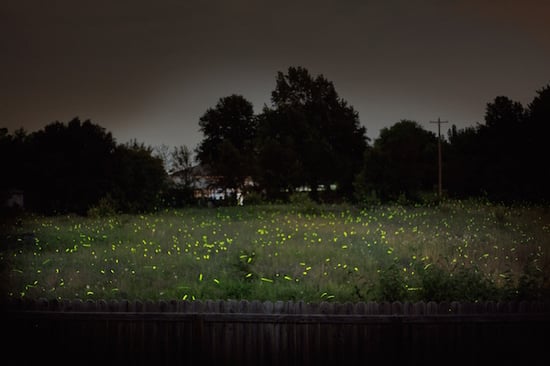
What Is a Lightning Bug?
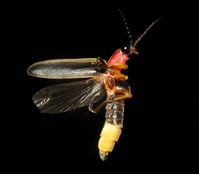
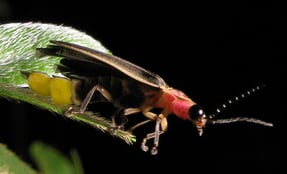
Habitat and Diet
Life Cycle
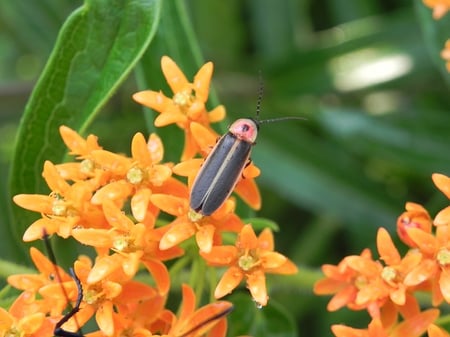
Firefly vs Lightning Bug
Identify Lightning Bug Names North America Firefly (Bug)
Lightning Bug
Moon Bug
Glow Wing
Golden Sparkler
Fire Devils United Kingdom Glow worms Japan Hotaru Jamaica Blinkie
Peenie Wallie Puerto Rico and Cuba Cucubanos Portugal and Brazil Pirilampos Deutschland Glühwürmchen France Luciole Netherlands Glimworm Italy Lucciola 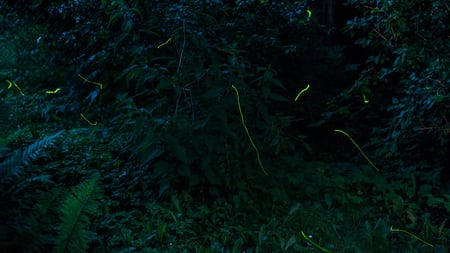
A Year in the Life of a Lightning Bug

Lightning Bugs: Why Exercise They Glow?
How Do They Glow?
Why Do They Glow?
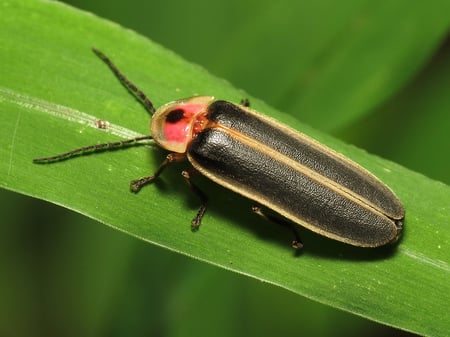
(Katja Schulz / Flickr) Types of Lightning Bugs
Photinus pyralis
Phausis reticulata
Photuris versicolor
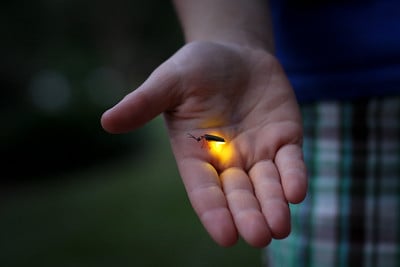
Are Lightning Bugs Endangered?
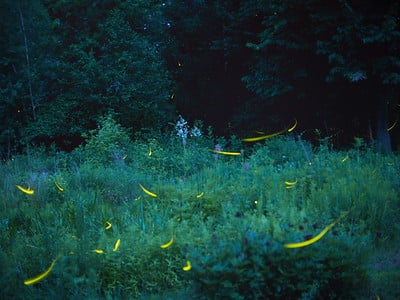
7 Frequently Asked Lightning Issues Questions
#1: What Is a Lightning Bug?
#2: What Is a Lightning Bug's Life Cycle?
#3: What Is the Divergence Betwixt a Male and Female person Lightning Issues?
#4: How Practice Lightning Bugs Glow?
#v: Why Do Lightning Bugs Glow?
#half-dozen: Where Exercise Lightning Bugs Live?
#7: Are Lightning Bugs Disappearing?

What's Adjacent?

About the Writer
Ashley Sufflé Robinson has a Ph.D. in 19th Century English Literature. As a content writer for PrepScholar, Ashley is passionate most giving higher-bound students the in-depth data they need to get into the schoolhouse of their dreams.
Source: https://blog.prepscholar.com/lightning-bugs
Posted by: jacksonshelve.blogspot.com


0 Response to "How Long Do Lightning Bugs Live"
Post a Comment